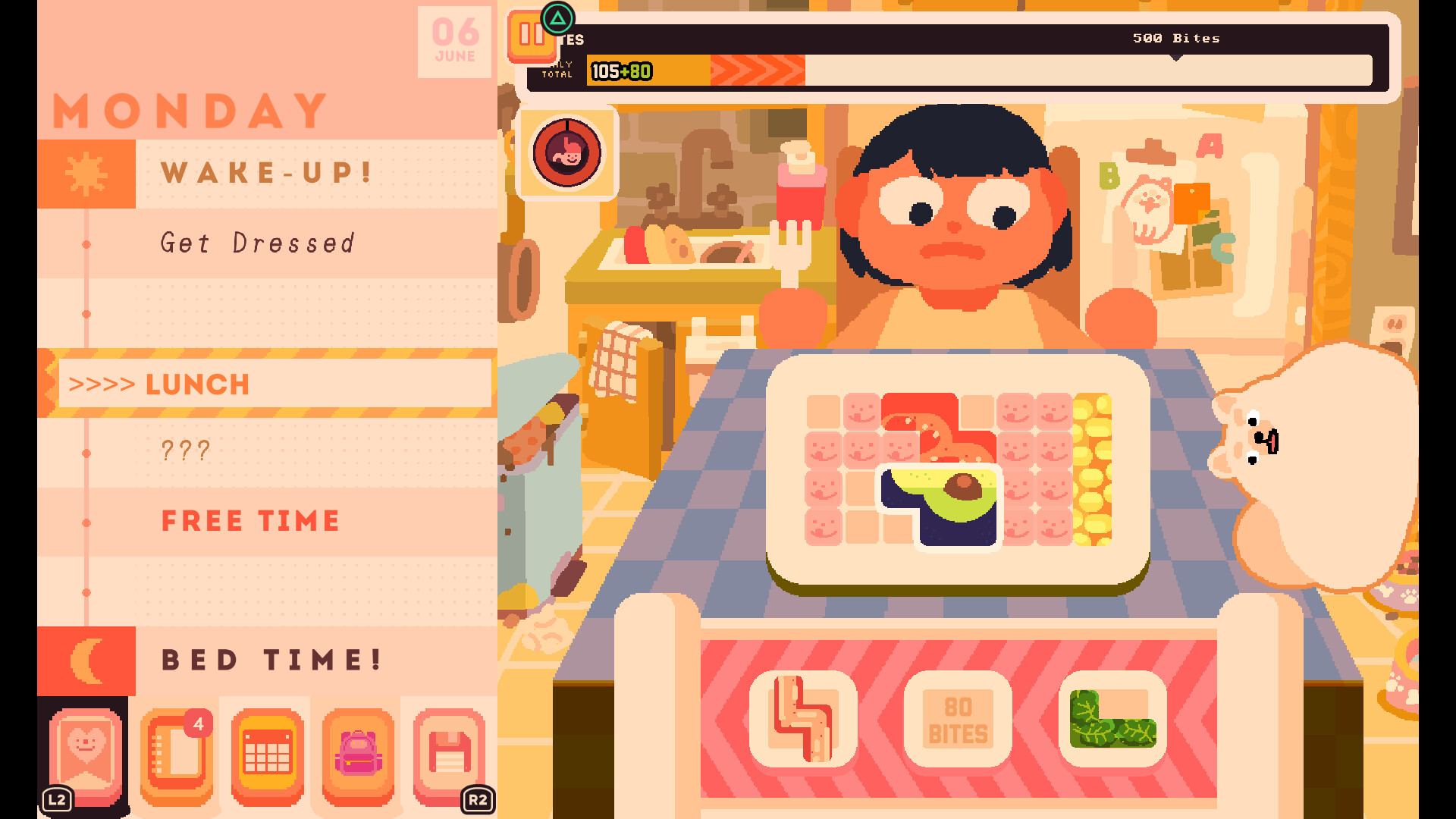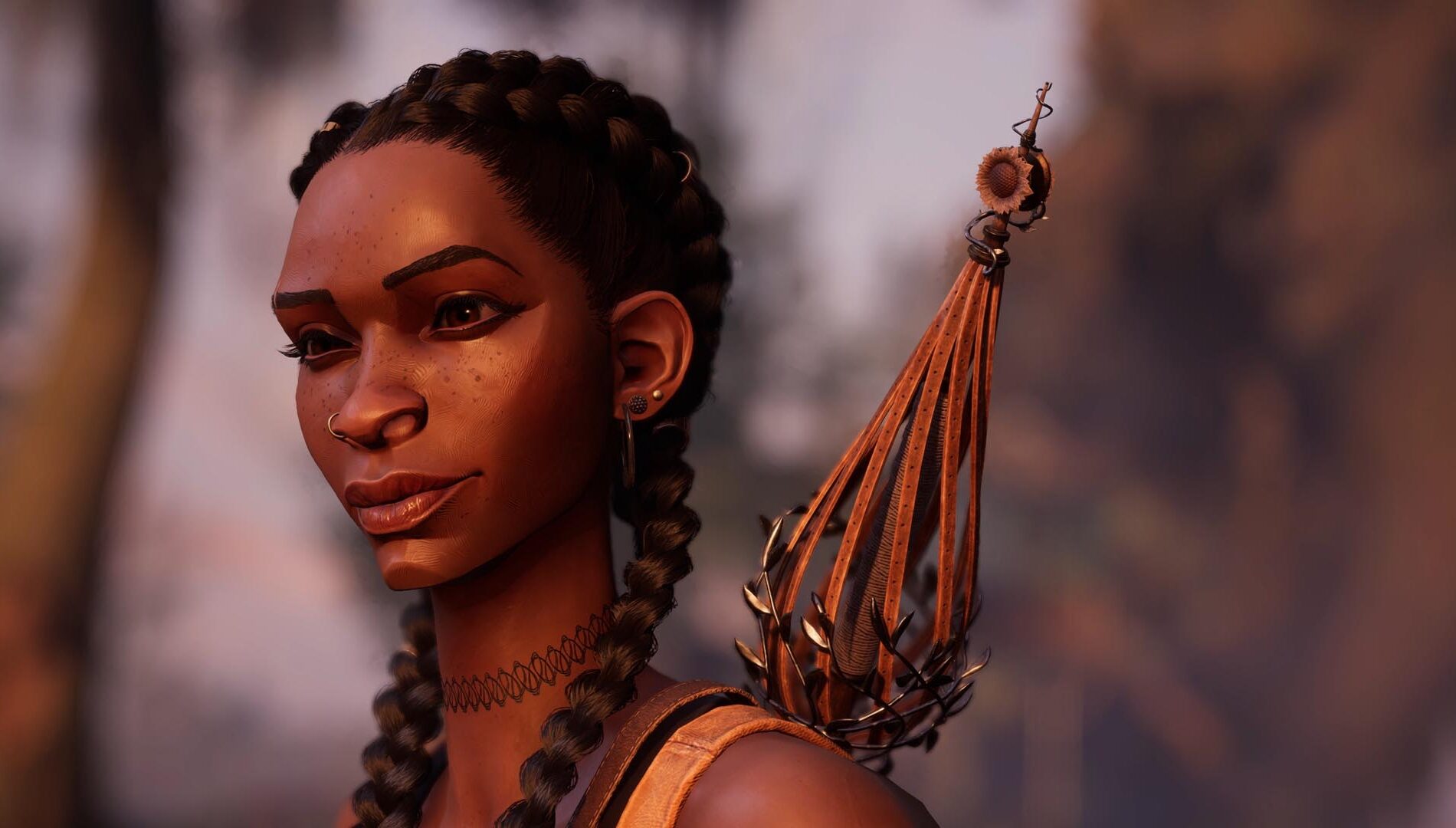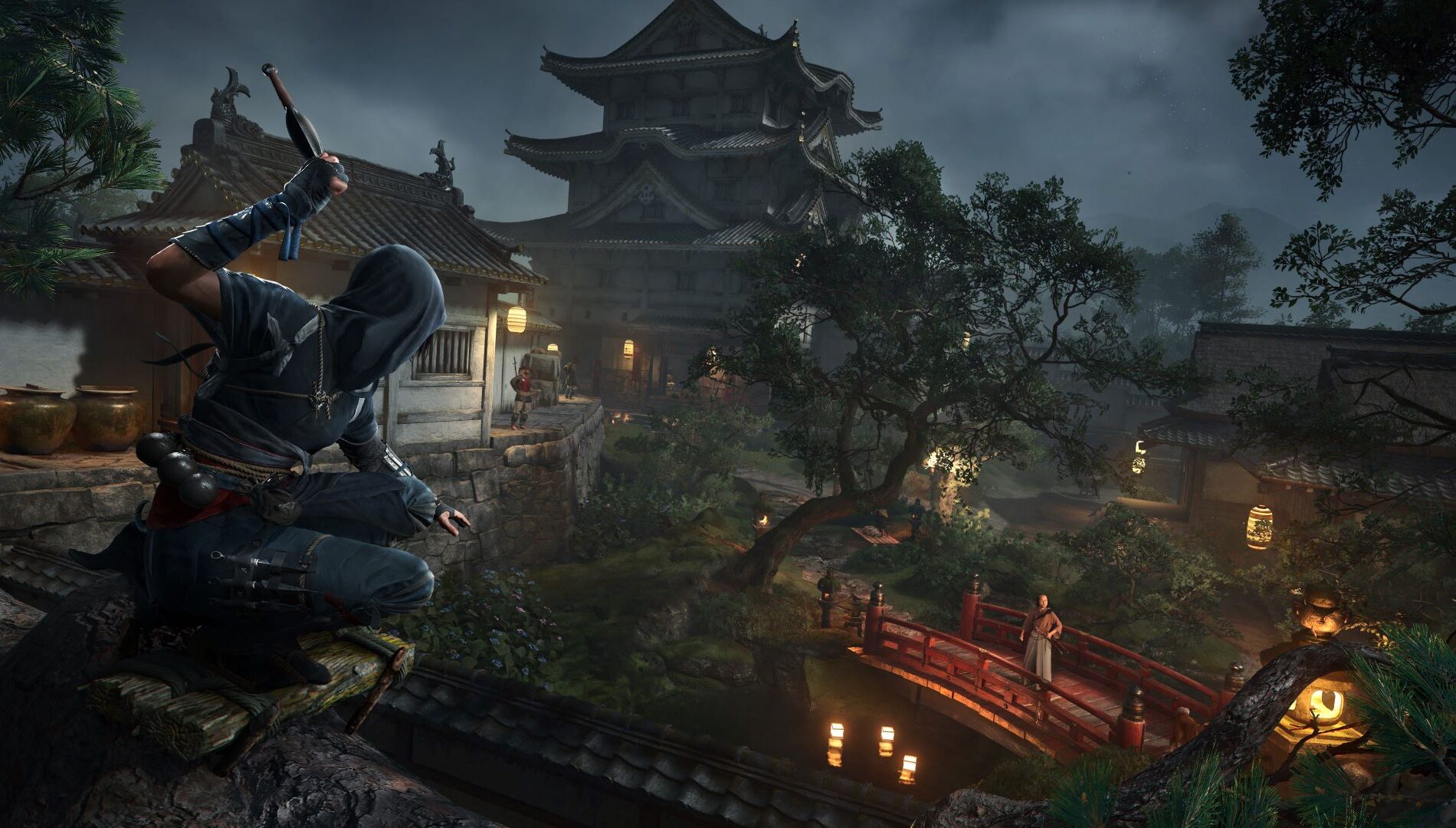
The bleak humor and desperate power of Consume Me
www.gamedeveloper.com
The IGF (Independent Games Festival) aims to encourage innovation in game development and to recognize independent game developers advancing the medium. This year, Game Developer sat down with the finalists for the IGFs Nuovo and Grand Prize nominees ahead of GDC to explore the themes, design decisions, and tools behind each entry. Game Developer and GDC are sibling organizations under Informa.Consume Me is a bleakly funny look at dieting and eating, exploring a teenagers life and how every element of it is affected by the strange, sometimes alarming ways dieting makes people look at food. Game Developer caught up with Jenny Jiao Hsia and AP Thomson, co-directors of the multi-IGF Award nominated title, to talk about the design decisions that went into creating food-based minigames that would explore the challenges and effects of dieting, why they chose to explore this subject with humor, and the steps they took to try to keep their game from triggering those who have complex reactions to dieting and disordered eating.Who are you, and what was your role in developing Consume Me?Jenny Jiao Hsia, co-director: Hello, Im Jenny Jiao Hsia, co-director of Consume Me, and I started developing Consume Me as my capstone project during my undergraduate degree. Years later, I somehow managed to convince a bunch of other talented people to help make this video game with me. I do everything from protoyping the mini-games, storyboarding the narrative, figuring out the visual direction, drawing most of the characters in the game, tweaking the UI, and putting together most of the non-interactive sequences in the unity inspector with custom tools built by AP (Thomson). I guess I also technically lived through the experience of what the game and its story is based on Does that count? Related:AP Thomson, co-director: Hi, I'm AP Thomson, and I'm one of the co-directors of Consume Me alongside Jenny. In terms of roles, I did the vast majority of the programming, a good portion of the design (particularly the systems design), a big chunk of the writing, and also, I'm the guy singing and playing the guitar in the (spoiler) one musical scene in the game [laughs].Now these folks arent answering the interview questions, but lets get their names out there:Jie En Lee (aka Kelly) made a ton of art for the game, in particular nearly all the backgrounds!Violet W-P did the sound design!Ken coda Snyder made the music!What's your background in making games?Hsia: Growing up, I always loved to draw but I also hated video games. When it was clear that I was not cut out to Become A Doctor, video games somehow became my back up plan. What I mean by that is: during my second year of undergrad, I stumbled into Games 101 (an art history but for video games course @ NYU), met AP, began collaborating on projects, switched my major to Game Design, and the rest is pretty much history.Related:Thomson: I've been making games independently basically since I was in high school? During my undergrad I worked at the MIT Gamelab (then called the Singapore-MIT GAMBIT Game Lab). After that, I went to get an MFA from the NYU Game Center. That's where I met Jenny. The two of us went on to make and release Stellar Smooch (nominated for Student IGF in 2015) and Beglitched (which won the Student IGF in 2016) along with a bunch of smaller projects over the years. I've also released some other games including Swap Sword (with Diego Garcia), Multibowl (with Bennett Foddy), and Fortune-499 (which was mostly a solo project with Jenny contributing some of the art).How did you come up with the concept for Consume Me?Hsia: I went through an extreme phase of disordered eating and dieting as a teenager and YEARS LATER, after playing Papers Please, I thought it would be cool to make a game that mechanically resembled my personal experience through that time period. I wanted to play around with the idea that you could attempt to reach your weight loss goals very much like a video game and felt that it could be cool to design consequences for the player to experience that go along with that.Related:Thomson: I didnt. Go ask Jenny [laughs].What development tools were used to build your game?Thomson: The standard answer here is that we used Unity as our primary game engine, Photoshop and Procreate to make 2D assets, Blender to make 3D assets, Ableton for sound effects, Google sheets for our spreadsheets, etc.. But while you're here, let me take the opportunity to shout out some specific plugins we made heavy use of: Super Text Mesh is how we got all the bouncy animated text in there, Rewired was an indispensable tool for setting up the gamepad controls, and (this one is kinda obscure) "Advanced Event" by ByteSheep Digital was an essential building block for making various editor tools we used throughout development.Consume Me turns food and calorie counting into an array of minigames meant to simulate the challenges around dieting and how it can reshape your perception of food. Can you tell us about your process in taking these thoughts around dieting and food and turning them into a minigame? Can you walk us through this process for the design of one of the specific minigames?Thomson: Jennys dieting is something that places pressure on her life in a multitude of ways and we wanted that represented properly in the game. Key to that is that theres more than one way to fail at dieting: you can eat too much, overshooting your calorie budget, or you can eat too little (or in a way thats unsatisfying) and end up hungry, OR you can counterintuitively do BOTH of those things at the same time. Additionally, eating is something you generally do everyday, so we needed to have a reusable mini game that wouldnt get old too quickly. The resulting food Tetris mini game mostly emerged from trying to reconcile all those constraints. Each food puzzle piece gets a fake calorie value, but thats unrelated to how it impacts hunger and craving (which is ultimately determined by the shape of the food) allowing for the aforementioned multitude of outcomes. Anyway, we had to iterate on it a ton before we arrived at the current design [laughs].Consume Me explores the ways in which dieting attempts to turn food into a mechanical, countable process despite many difficult-to control needs and feelings within the human body. What thoughts went into capturing this battle with the self within the gameplay and the player's limited controls within the minigames?Thomson: Theres definitely a balance between what the player can control vs not control, but more than that, theres a distinct contrast between systems the player is aware of (i.e. the fake calorie counting system, how hungry Jenny is) and systems that are hidden from the player. We ultimately wanted to trick the player into behaving like teenage Jenny by limiting information in this way. A lot of the hidden systems are built around the random encounters. Basically, the way these work is that theres a big deck of event cards and when the player gets a random encounter it just draws a card randomly from this deck. But actions the player takes can secretly add or remove cards from this deck. For instance, if Jenny goes to bed hungry (with her guts at < 50%), itll add a snack attack event to the deck where, if it gets drawn, Jenny gives into her craving and eats a big snack.Food-based games are not the entire experience as players must also carry out the protagonist's life and duties as well. What thoughts went into crafting the narrative and turning the main character's various activities into other minigames?Thomson: Dieting doesnt end the moment youre done with lunch. We wanted to explore the ways dieting overlaps with other aspects of Jennys life (how she balances it with school work, social obligations, keeping her mom off her back, etc.). To do that, we basically had to simulate the rest of Jennys life [laughs]. But even beyond that. Consume Me isnt just about the ways dieting Consumes Jennys life, its about how she jumps from obsession to obsession, piling more onto her plate with each chapter, following an arc similar to the one she followed in real life, so all the non-dieting parts of the game become more and more essential as the story proceeds.What drew you to the game's art style? What appealed to you about creating something playful and animated around this serious subject?Hsia: The current art style is basically the same art style I used to prototype the original mini-games. Back then, I basically tried to keep the decision-making simple: pick a limited color palette, the pencil tool in Photoshop, a few brush sizes. What mattered to me back then was getting the prototype working so I didnt have a lot of time to focus on the art side. As I continued developing the game, the look of the art changed, too. I think most artists would agree that as they evolve themselves, so does their art style.When Kelly joined the project to help me out on backgrounds it was a really fun opportunity to see what they could do with my guidelines from the prototyping phase. Since this game has been in development for many years, you can see how the character is drawn in many different styles. Its hard to stick to 1 style without feeling the need to redo it and I guess we just left my old art in the game alongside the new art styles. I also like to joke that the art looks like it had been made by a whole team of like 20 people when really its just 2 artists who have worked on the project for a number of years whose art styles constantly evolved and who felt too lazy to redo the old scenes.Likewise, why was it important to you to explore dieting in a darkly humorous way? What benefits and challenges came from looking at this subject with bleak humor?Hsia: Lifes depressing. Especially right now. Lots of things look hopeless. Dont you want to laugh a little and make some jokes before you die? Thomson: This is actually one of my pet takes. Basically, I think art thats completely devoid of humour is also incapable of being serious. Now I dont mean that everything should be a comedy, exactly, but more that humor as emotional lightness contrasted with emotional heaviness is a really important part of the texture of any narrative. My go-to example here is that even Shakespeares famous tragedies (e.g. Hamlet) are suffused with humor throughout even if they arent comedies. Which is just to say, when making something about a serious subject, finding humor somewhere is a very important part of telling a real story, for whatever thats worth.The itch.io store page for this game mentions that this game came about from personal experiences with dieting and disordered eating. What difficulties did you face in exploring these memories and feelings while creating the game? Did you feel that creating art around these experiences has helped you or affected you in any way? Do you have any concerns about how this game may affect others who play it?Hsia: I got more emotional rereading my diary entries about my high school relationship and failing my classes in freshman year than I did about the dieting stuff. I actually feel like, as we expanded the games scope, formed an actual team, and turned this personal project into an actual video game, I became less attached to it, emotionally. Regarding my concerns about the subject matter, I dont want my experiences to trigger other people who are in a bad mental space with food and how they see their body, so we put a content warning.Thomson: We were definitely concerned about Consume Me being triggering or upsetting for anyone with a history of disordered eating. For that reason, we put a pretty hefty content warning at the front of the game. We also attempted a few maneuvers to detach it from real dieting and disordered eating while still evoking the feeling of those things (Stuff like removing specific weight numbers from the game and replacing calories with a fictional unit of energy called Bites). That said, were well aware that these interventions are insufficient for at least some portion of the audience, so we absolutely wont begrudge anyone for giving it a pass!
0 Yorumlar
·0 hisse senetleri
·76 Views











